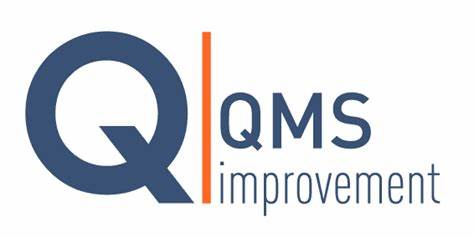Title Page
-
Document No.
-
Audit Title - Cleaning Programme
-
Client / Site - Tamarfoods
-
Conducted on
-
Prepared by - Debra Phipps
-
Location
-
Personnel
-
Summary;
M&S THE ORGANISATION & MANAGEMENT OF CLEANING (SECTION A) December 2017 v19
M&S 1.1 Cleaning, Planning and Documentation
-
1.1.1 All routine cleaning operations throughout the factory must be pre- programmed and documented.
-
1.1.2 A cleaning plan must be in place which sets out the frequency of all cleaning tasks. The following information must be documented: (i) Clear identification of the item of equipment, or area of the building structure, to be cleaned. (ii) The frequency of each cleaning activity (ii) Target date on which cleaning is intended to be carried out (this is particularly important for tasks done on a less frequent basis).
-
1.1.3 Cleaning frequencies must be determined according to experience and based on all relevant parameters e.g. results of visual cleaning checks, microbiological testing, internal audits, pest control inspections etc.
-
1.1.4 Documented records of completed cleaning must be kept and have to include: (i) Actual date on which cleaning is carried out. (ii) Sign off by the person who carried out the cleaning. (iii) Sign off by a responsible member of management to confirm acceptability of standards achieved. (iv) Note of explanation and corrective action where cleaning is not carried out for any reason.
M&S 1.2 Cleaning Work Instructions
-
1.2.1 Cleaning work instructions must be in place for all planned cleaning.
-
1.2.2 Work instructions must contain the following information:- • Item of equipment/area to be cleaned. • Frequency of cleaning. • Instructions for dismantling equipment including any necessary engineering assistance (photographs should be used where relevant e.g. for more complex items of equipment). • Cleaning chemicals/equipment required together with concentration details. • Detailed cleaning method/techniques and where appropriate disinfection. • Key points for final inspection.
-
1.2.3 Sites must be able to demonstrate that the cleaning methods used are effective in achieving their purpose i.e. the removal of allergens, removal of microbiological risk etc.
-
1.2.4 Work instructions must be periodically reviewed and updated where necessary and should be available on the factory floor for reference by cleaning staff.
M&S 1.3 Training and Supervision
-
1.3.1 Personnel carrying out cleaning must be effectively supervised to ensure that cleaning work instructions are being followed and that jobs are being carried out correctly.
-
1.3.2 Cleaners must be trained in detail against the specific work instructions. They must not be permitted to carry out unsupervised cleaning until training relevant to the cleaning task has been completed.
-
1.3.3 The training programme must include an assessment of the cleaner’s effectiveness in carrying out cleaning tasks. This assessment must be carried out by a senior site Technical Manager or suitably qualified person.
-
1.3.4 Training must be carried out by personnel with relevant practical factory experience, and must be updated in line with any changes to work instructions.
-
1.3.5 Training records must be counter-signed by the cleaners and must be made available for inspection.
M&S 1.4 Assessment of Finished Cleaning Standards
-
1.4.1 Finished cleaning standards must be verified on a regular basis by an independent member of the factory management team, who has a sound knowledge of the factory and standards required i.e. Technical personnel.
-
1.4.2 Records of these checks, including any corrective actions taken in the event of unsatisfactory standards, must be maintained.
-
1.4.3 Where products are chilled, checks must include microbiological analysis (e.g. surface swabbing).
M&S 1.5 Review of Cleaning Management Systems
-
1.5.1 The Cleaning Management System must be subject to a thorough process of review on a regular basis. The review should be carried out by factory senior management and should include feedback to the personnel responsible for cleaning.
M&S 1.6 Cleaning Equipment
-
1.6.1 CONSTRUCTION OF CLEANING EQUIPMENT<br>• All equipment used for cleaning (including brushes, scrapers, squeegees and shovels) must be fit for the purpose intended. Squeegees must be constructed in such a way that they can be easily cleaned and disinfected. Mobile vacuum cleaners must be regularly cleaned and the flexible pipe-work kept in good order. Damaged suction pipes/tooling must be replaced or appropriately repaired. The use of tape is not an acceptable method of repair. When items of cleaning equipment become damaged they must be replaced or adequately repaired. The condition of cleaning equipment should be included in hygiene self-audits. Cleaning equipment must be subject to regular inspection and any damaged items must be immediately discarded.
-
1.6.2 COLOUR CODING OF CLEANING EQUIPMENT<br> (i) Cleaning equipment must be colour coded to distinguish between the following uses :<br>• Food contact/production equipment surfaces • Floors • Toilets • Engineering • Non food areas, corridors, external areas
-
1.6.3 CLEANING AND DISINFECTION OF CLEANING EQUIPMENT • New cleaning equipment must be cleaned and, if necessary, disinfected before use. Any labels must be removed. • All cleaning equipment must be cleaned after each use and always stored in a clean condition. • Hoses must be regularly cleaned, including retractable types. • Where microbiologically vulnerable food products are manufactured and cleaning equipment needs to be regularly cleaned, all parts of the equipment (including handles) must be fully disinfected for sufficient contact time i.e. minimum 15 minutes.
-
1.6.4 STORAGE OF CLEANING EQUIPMENT • Equipment must be stored separately, in accordance with colour coding to prevent risks of cross-contamination. • All cleaning equipment must be stored off the floor in a suitable area designated for the purpose.<br>• In areas where microbiologically vulnerable products are manufactured, the heads and handles of equipment, such as squeegees, must be stored fully submerged in disinfectant solution when not in use. In dry areas, this equipment must be cleaned and stored dry.
M&S 1.7 Cleaning Chemicals
-
1.7.1 ESSENTIAL REQUIREMENT: For suppliers that manufacture chilled products, Marks & Spencer approved disinfectants must be used at a minimum 1% concentration (in accordance with manufacturer’s instructions) for the final stage of cleaning. Please refer to the Marks & Spencer list of approved disinfectants (Appendix 1.0 of this document).
-
1.7.2 The in-use concentration of chemical solution must be checked on a regular basis to ensure accurate dosing. The results of these checks must be recorded and the records retained for future reference.
-
1.7.3 Cleaning chemicals must be appropriate to the specific cleaning tasks
-
1.7.4 The chemicals selected must be compatible with and appropriate for the equipment being cleaned.
-
1.7.5 Only reputable cleaning chemical suppliers may be used.
-
1.7.6 No pine, perfumed or phenolic-based chemicals are to be stored or used on site, including amenity/toilet areas, as these materials have the potential to taint food products, even at very low levels. Alternative, non-perfumed materials are available.
-
1.7.7 Chemicals must be handled and diluted/dosed in accordance with the manufacturer’s instructions, including adherence to all recommended safety procedures.
-
1.7.8 Cleaning chemicals must be handled in line with Health and Safety and COSHH requirements to protect operator safety.
-
1.7.9 Cleaning chemicals must be stored in a secure/locked-off area and not in food production areas.
-
1.7.10Where manual make-up of concentrations is carried out, the vessels/spray bottles containing the solution must be appropriately labelled.
M&S 1.8 Cleaning Methods
-
1.8.1 The sequence of cleaning operations must be organised to prevent any re-contamination of equipment and environment.
-
1.8.2 High pressure water hoses must not be used due to the potential for contamination of foods and equipment surfaces. Where the use of hoses is unavoidable, they must be of medium to low pressure: high volume.
M&S 1.9 Equipment Washing Areas
-
1.9.1 All areas used for the washing of equipment must be appropriately located, of suitable construction and easily cleanable.
-
1.9.2 Drainage must be efficient and extract ventilation sufficient to remove steam and prevent excessive condensation.
-
1.9.3 Logical flow routes must provide effective separation of dirty and cleaned equipment.
-
1.9.4 Equipment must not be washed directly on the floor.
-
1.9.5 Automatic equipment washing machines must be carefully selected and suitable for the purpose intended. They must be capable of cleaning, and where necessary disinfecting, equipment efficiently and be easily accessible and cleanable internally and externally.
M&S 1.10 Personnel
-
1.10.1 All personnel employed in cleaning must receive training in cleaning methods and specific work instructions for all cleaning tasks they are required to carry out. Training for each element of their job must be recorded and the records retained for future reference.
-
1.10.2 Clothing used for cleaning tasks must be obviously different from the clothing worn by food handling staff and it must be adequately separated through laundering and return delivery systems e.g. low risk areas, high care areas.
-
1.10.3 Protective clothing used by toilet cleaning staff must be changed at least daily and both clean and dirty clothing stored totally separately from food handler’s protective clothing.
M&S 1.11 Management of Green Transport Trays
-
1.11.1 Where a supplier dispatches products using green trays, the supplier has to remove any debris and ensure the trays are free from contamination prior to use. If cleaning is required, the trays can be wiped or passed through an automatic machine.
-
Add signature












